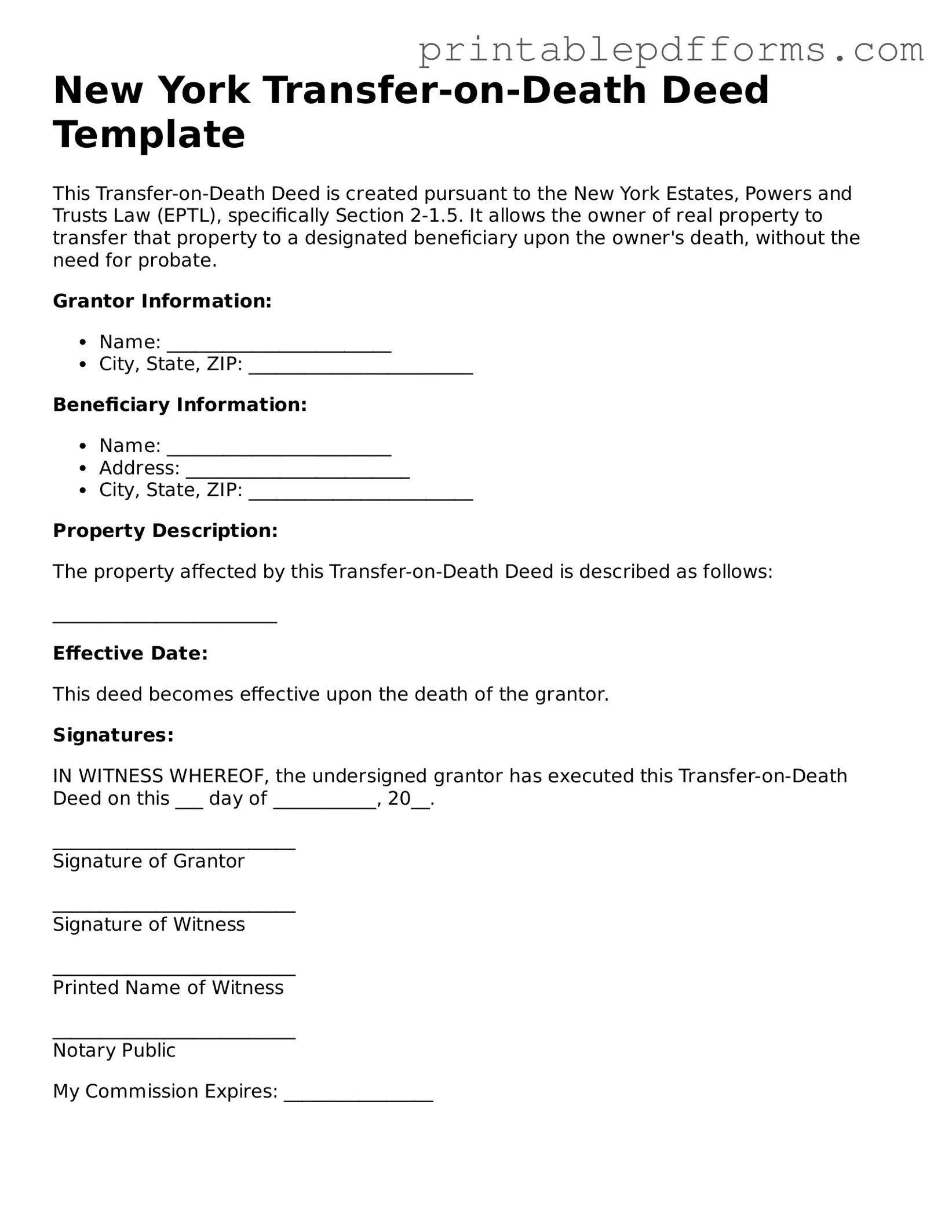New York Transfer-on-Death Deed Document
The New York Transfer-on-Death Deed is a legal document that allows individuals to transfer real estate to beneficiaries upon their death, avoiding the often lengthy probate process. This deed provides a straightforward way to ensure that your property goes to the intended heirs without the complications of a will. For those considering this option, filling out the form can be a crucial step in estate planning—click the button below to get started.
Create This Document Online
